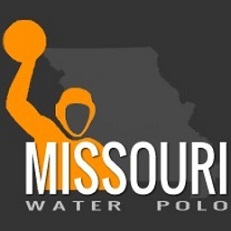The Origins of Water Polo
There is little documentation as to the origins of water polo. However, we do know that the term “polo” is the English pronunciation of the Indian word “pulu,” meaning ball. Just as the ball game played on horseback became known as “polo,” the ball game played in water became known as “water polo,” although there in no connection between the two sports.
The game that evolved into modern water polo began as a form of rugby football played in rivers and lakes with the object to “carry” the ball to the opponent’s side. By 1869, an Indian rubber ball began replacing the original ball which was made from a pig’s stomach. One year later, the London Swimming Club developed rules for football to be played in swimming pools. The first official game was played in the Crystal Palace Plunge in London.
The early games were generally exhibitions of brute strength. Passing, punting and dribbling were scarcely ever practiced. Each player considered it his duty to score goals without regard to position. A goal was scored by placing the ball, with two hands, on the top of the tank end. A favorite trick of the players was to place the five- to nine-inch ball inside their swimming suit and dive under the murky water, then appear again as near the goal as possible. Should the player come up too near the goal, he was promptly jumped on by the goalie, who was permitted to stand on the pool deck.
By 1880 in Scotland, the introduction of the Trudgeon stroke permitted rule changes to make the game faster. The game moved from a rugby-style to a soccer-style of play. The goal then became a cage of ten feet by three feet and a goal could be scored by throwing the ball into this area. The small ball was changed to a leather association football (soccer ball). Players could only be tackled if they held the ball and players could only touch the ball with one hand at a time. In the late 1880s, these Scottish rules were generally adopted throughout Great Britain.
In 1888, the United States became the next country to play water polo when John Robinson, an English swimming instructor, organized a team at the Boston Athletic Association. Two years later, J.H. Smith and Arnold Heilban started a team at the Sydenham Swimmers Club (later at the Metropole AC) in Providence, Rhode Island. In the fall of 1890, the New York Athletic Club (NYAC) introduced the game.
The early American game was played in the “old” English style, but soon developed its own, distinctly American characteristics. It was a game of close formations and fierce scrimmages and was one of the roughest games ever played. The ball would be taken underwater and held with two hands. Players grabbed each other where they chose, becoming locked in wrestling grips and losing interest in the whereabouts of the ball. It was a survival of the fittest. In many underwater battles, men let go of one another only when one man was no longer able to endure without air. Players often floated to the surface or were pulled out of the water in need of resuscitation.
Because American pools were small, the water polo players continued to play according to their rules even after learning the “new” English rules. L. de B. Handley said, “There is no room for above water passing action.”
The first American championships took place on January 28, 1890 in Providence where the Sydenham Swimming Club defeated the Boston Athletic Association, 2-1. By the turn of the century, the game was one of the more popular spectator sports in America.
Water polo spread to Hungary in 1889, Belgium in 1890, Austria and Germany in 1894 and France in 1895. The game was included in the Olympic Games of 1900 as an exhibition at the Paris Games. Only club teams participated and Great Britain defeated Belgium, 7-2, in the final game. A club from France took third place.
At the St. Louis Games of 1904, the United States was the only country to participate. Germany showed an interest in entering, but declined after discovering that the American-style of water polo was to be played instead of the European or English-Scottish version of the game. In succeeding year, the British continued to dominate European and Olympic play, winning Olympic titles in 1908 in London, in Stockholm in 1912 and Antwerp in 1920.
In 1911, a decisive advance was made in the game when the Federacion International de Natacion Amateur (FINA) made the English-Scottish rules obligatory for all member nations.
It is fair to state that not until the 1920 VII Olympiad in Antwerp, when twelve nations competed, did the game really become popular and internationally represented. Even then, the Germans, Austrians and Hungarians were not permitted to participate due to their involvement in World War I.
Beginning in 1928, first Germany and then Hungary began a reign of dominance over international water polo that lasted into the 1980s, when Yugoslavia, the United States, the USSR, Italy and Spain all fielded extremely competitive teams.

